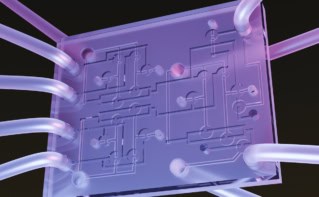
Molecules that act like paddlewheels can help propel sodium ions through a solid-state electrolyte. This finding, by researchers at Duke University in the US, could aid the development of next-generation batteries with a wide range of applications, including data storage centres, thin smart phones and light electric vehicles.
Lithium-ion batteries are today’s energy source of choice in portable electronics and electric vehicles. However, the flammable and toxic organic electrolytes they contain are a cause for concern. Lithium is also rare and expensive relative to some other, more common metals, and the global supply is subject to various uncertainties.
Sodium’s energy density is lower than lithium’s, but it is nonetheless a promising alternative for battery applications thanks to its relative abundance and lower cost. The difficulty is that only a few materials conduct sodium ions well enough to make good electrolytes. Researchers are thus keen to identify new solid electrolytes in which the ions diffuse quickly and understanding the mechanisms responsible for this diffusion is a key step in that process.
Strongly anharmonic phonon modes
Led by Olivier Delaire, the Duke researchers used neutron scattering experiments at the Oak Ridge National Laboratory to study one possible electrolyte, sodium thiophosphate (Na3PS4). The crystal structure of this material was known to create a one-dimensional tunnel for sodium ions, but the new work showed that the pyramid-shaped phosphorus-sulphur PS4 units that frame the tunnels also twist and turn. This motion gives rise to strongly anharmonic phonon modes that act like paddlewheels, helping the sodium ions move through the material by allowing them to “hop” along minimum energy pathways.

Sandwich strategy makes solid-state lithium battery last longer
While this process had been predicted by theory, the results of Delaire and colleagues show that it is much more complex than previously thought – something that they confirmed using ab initio molecular dynamics and extended molecular dynamics calculations at the National Energy Research Scientific Computing Center. In the new calculations, the Duke team used a machine learning algorithm to analyse the potential energy surface in which the atoms vibrate and move.
The researchers say their results, which they describe in Energy & Environmental Science, provide a microscopic understanding of how atomic vibrations facilitate the diffusion of sodium ions through the material. They are now studying a slightly different version of their material that contains antimony instead of phosphorus.



